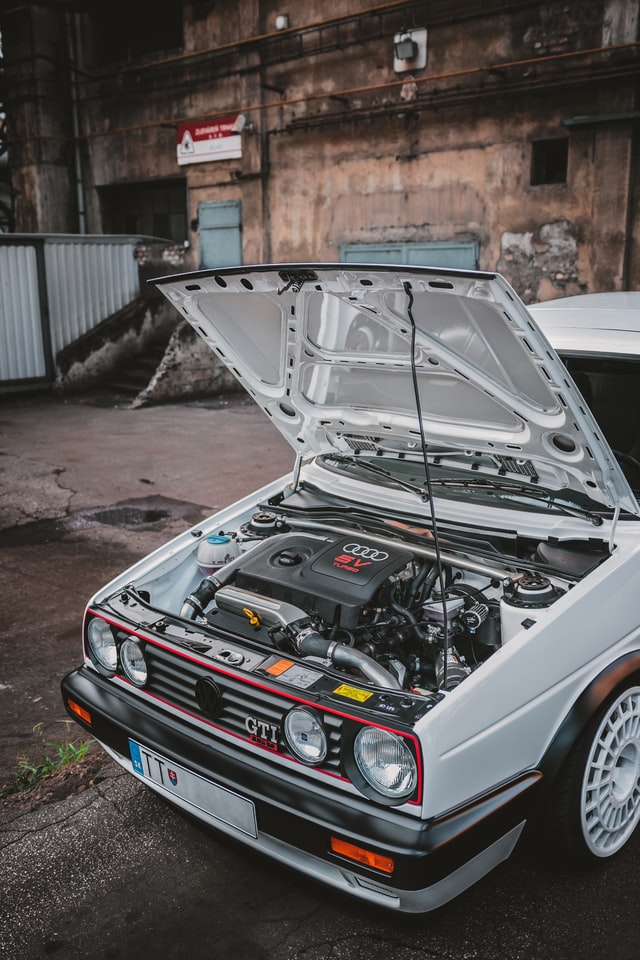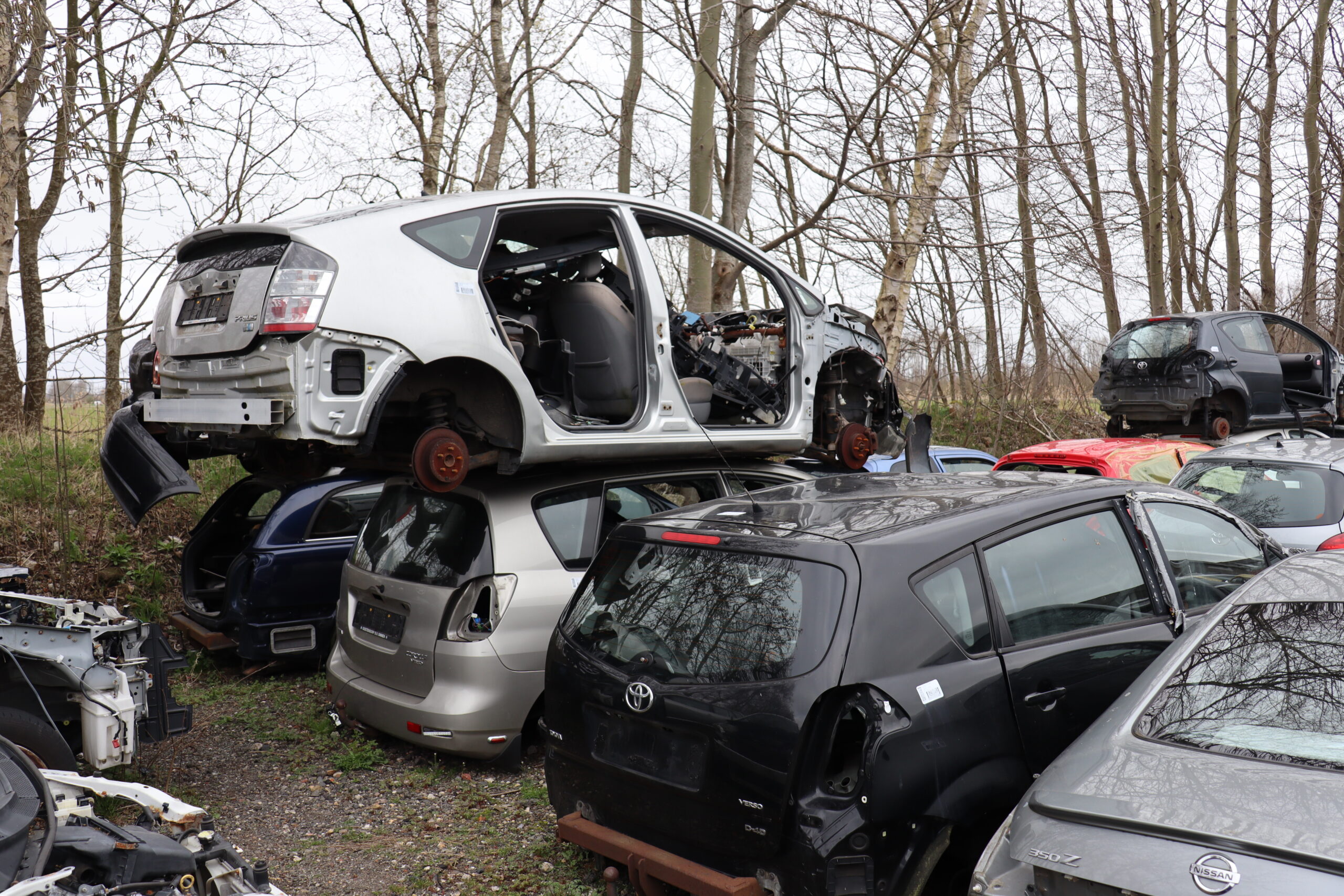Volkswagen Group focuses on mass production with the aid of 3D printing. Which raises the question: is the technology geared towards the large-scale use of recycled plastic? We investigated this based on three short case studies.
Tekst Jens Holierhoek
Unsplash
#1 The innovator: 3D weaving with pet bottles
Automotive brands Polestar and Audi are putting discarded plastic to good use in 3D applications. Both use old pet bottles to make seat covers for their models. Polestar recently did that for its Precept concept model and Audi did the same for its brand new A3. At least 107 1.5 litre pet bottles were used. The largest share is used for the floor mats, while 45 bottles go into the seat covers. The pet bottles are first processed into granulate before they can be used in the seat covers. Yarn is produced from the recyclate by means of extrusion. That plastic yarn is then used to weave the seat covers. It is also known as 3D knitting and German company Trever excels in this. They developed the new technology, which uses recycled plastic and produces no waste, in collaboration with German imat-uve in 2018. One long plastic thread is all that is needed. According to Trevira and imat-uve, the new technology offers many benefits for automotive manufacturers, because it saves time and money during production. Besides, clients can be offered greater personalisation, because virtually any motif can be woven in 3D.
The quality of recycled plastic destined for the 3D-printer or weaver varies greatly.
#2 The realist: the quality of raw materials needs to improve
Both Venezuela and Germany, as well as Sweden, have apparently found a good ‘plastic yarn’ for their 3D printing and knitting. But it is by no means straightforward according to Aarhus University in Denmark. According to research conducted by this university, the quality of recycled plastic destined for the 3D-printer or weaver varies greatly. Even when the raw materials are sourced from a wellregarded producer. According to Professor Mogens Hinge, that is due to the lack of standardisation. The strength and density of one piece of plastic yarn may be of lesser quality than the other, even if the donor is exactly the same plastic waste dump. Hinge says that as a consequence, you have to adjust the speed, temperature and tension of the plastic yarn in the 3D-printer constantly for an optimal result. It is possible, but extremely challenging and time consuming, Hinge said in a conversation with 3D Printing Industry. The university is currently working with a Danish recycler on the development of such standardised yarn made of high quality recycled plastic. It appears to be a prerequisite for mass production.
Good quality ‘plastic yarn’ is a must for 3D printing and knitting
#3 The visionary: recycled plastic in 3D printed mass production
Volkswagen Group has been using 3D-printers for some time. Primarily for low-volume production initially – for example, the production of a prototype or parts for a limited series of sports cars.
Meanwhile, they have found that 3D printing can speed up the production process. “By reducing the cycle length for the production of parts, we can produce a greater volume of mass production very quickly”, according to the German company. The business wants to use 3D printing to launch at least 80 electric models on the market by 2025. According to Volkswagen Group, they can commence production without having to build production tools first, thanks to 3D printing.
Why Volkswagen Group is not yet using recycled plastic in its industrial 3D-printers? Volkswagen Nederland says suppliers do not yet provide 3D-printers that can process recycled material. They do however hope to use recycled plastic in future. Volkswagen Group’s Innovation and Engineering Center California (IECC), (specialist in 3D printing and artificial intelligence, amongst others), has already voiced its desire to produce new automotive parts from old plastic parts – to close the circle
Volkswagen Group found that 3D printing can speed up the production process
Huge potential
Consultancy Price Waterhouse Coopers (PwC) expects the use of 3D printing in the automotive industry to increase by an average of 15% per annum. The market will be worth 2.6 billion Euros by 2030. PwC has observed that on-demand 3D printing of parts is increasingly replacing just-in-time delivery. This is resulting in a new approach to inventory management in factories – and perhaps dealerships too. Instead of sending a truck with new or replacement parts, the 3D-printer is switched on.
Cathelijne van Wingerden
Hier komt informatie over de auteur.
Geavanceerde PP-recycling in Ohio
PP wordt ook veel gebruikt als verpakkingsmateriaal. Bijvoorbeeld voor shampooflessen. Slechts drie procent wordt gerecycled, omdat het plastic geuren vasthoudt en na recycling zwart of grijs wordt. Voor auto-onderdelen meestal geen probleem, maar voor een nieuwe fles shampoo wel. Het Amerikaanse PureCycle Technologies weet hier raad mee. In de zomer van 2019 opende het een 300 miljoen dollar kostende state-of-the-art recyclingfabriek. In Ohio wordt op jaarbasis 54 miljoen kilo aan PP verwerkt tot geurloze, heldere plastickorrels. Dankzij purificatie kan het op moleculair niveau bijna alle plastic producten aan, van tapijten tot speelgoed en van verpakkingsmateriaal tot wegwerpluiers. Zelfs dashboards en vloermatten zijn niet veilig.
PP wordt ook veel gebruikt als verpakkingsmateriaal. Bijvoorbeeld voor shampooflessen. Slechts drie procent wordt gerecycled, omdat het plastic geuren vasthoudt en na recycling zwart of grijs wordt. Voor auto-onderdelen meestal geen probleem, maar voor een nieuwe fles shampoo wel. Het Amerikaanse PureCycle Technologies weet hier raad mee. In de zomer van 2019 opende het een 300 miljoen dollar kostende state-of-the-art recyclingfabriek. In Ohio wordt op jaarbasis 54 miljoen kilo aan PP verwerkt tot geurloze, heldere plastickorrels. Dankzij purificatie kan het op moleculair niveau bijna alle plastic producten aan, van tapijten tot speelgoed en van verpakkingsmateriaal tot wegwerpluiers. Zelfs dashboards en vloermatten zijn niet veilig.
3D printed tools
Various automotive brands – such as Audi and Ford – use 3D printed tools in their production facilities. At the Ford factory in the German city of Keulen, the tools are made of 100% recycled nylon. The tools are fifty percent lighter and besides, they are relatively quick to produce. Whereas it was sometimes necessary to wait eight weeks for a new piece of equipment, a 3D printed unit is ready for use in five days. Ford anticipates this process becoming far quicker.






